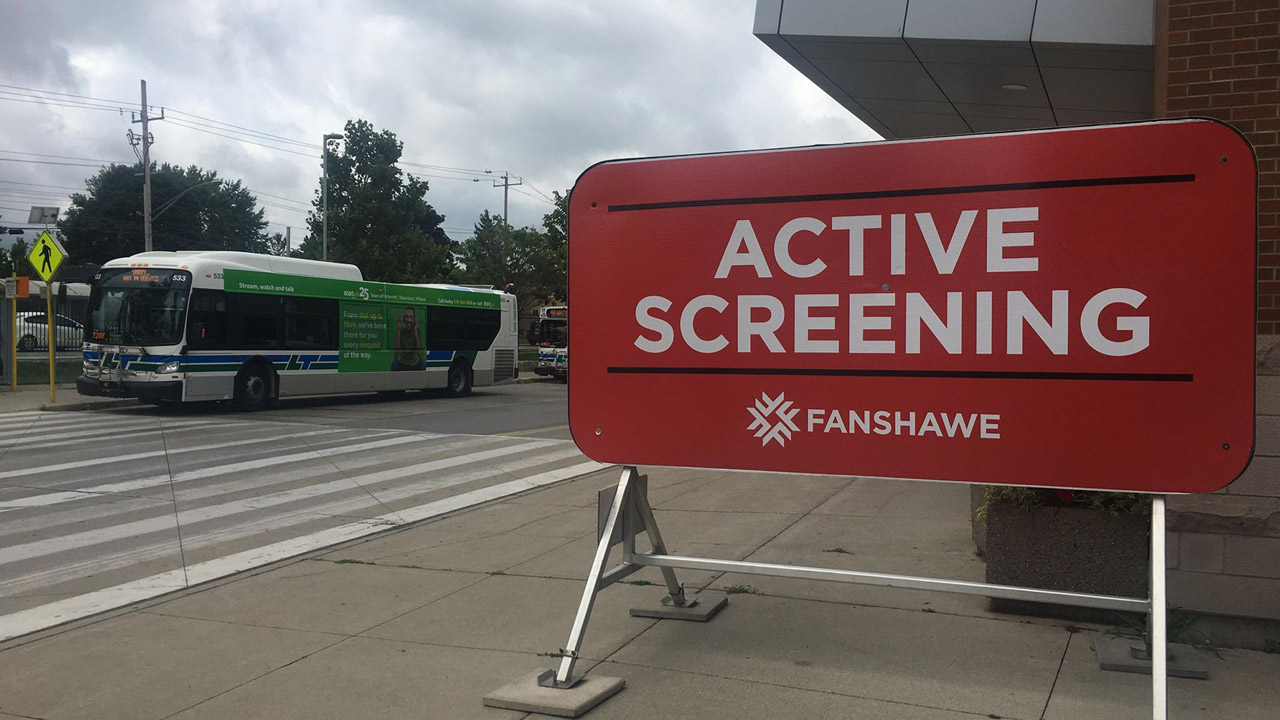Fanshawe reopening a soft launch for September
 CREDIT: ANGELA MCINNES
CREDIT: ANGELA MCINNESFanshawe's screening stations will become digital come fall, according to chief infrastructure officer Peter Gilbert.
Fanshawe’s partial reopening last week will help the College shape its safety measures for the fall, when approximately 8,200 students will study in a hybrid format.
The College has opened its doors, for the first time since March 17, to 1,000 students from 34 different programs needing to complete leftover course work from the winter 2020 term. Students are attending classes for the next two to four weeks, depending on the program. This gives College staff time to assess the success of their implemented safety measures.
“We’ll take this period of time here to be able to take some lessons learned, [and] to realize those come our fall semester,” said Fanshawe president Peter Devlin.
Current students are among the first to see what “going back to school” means in the time of COVID-19.
New protocols include barriers and hand-sanitizing pump stations. Classrooms have been modified to support physical distancing measures, and masks must always be worn as per the City of London’s mandatory face-covering by-law.
During the current session, students are asked questions at one of four active screening stations about their travel history and current health conditions. Once they pass the screening, they must scan their student or employee card, which keeps a record of them for contact-tracing purposes. A different-coloured wristband is distributed to screened students daily to prove they have been approved to enter the building.
This screening process will change in the fall, considering the increased number of students coming to class.
“The biggest difference that students would see in September is that we don't think it's possible to do the physical screening at the doors,” said Peter Gilbert, Fanshawe’s chief infrastructure officer. “With permission from the ministry and from the local health unit, we intend to make that an online screening process, where people would screen in advance and be sent an email verifying they had passed the screening, and then they would present that to people when asked.”
The respiratory therapy program is among those to return to the classroom. Program coordinator Julie Brown told Interrobang that adapting to the coronavirus pandemic has been a challenge, but she is pleased to be back on campus and is looking forward to September.
“I think everyone understands that this pandemic wasn't planned by anybody and it's no one's fault and we're just going to adapt and do what we have to do to make it work,” Brown said. “I wasn't sure what it would do to our admissions in the fall, but people are brave, and we are over-subscribed for the fall.”
Devlin said that 9,600 students are expected to attend classes virtually come fall, in addition to the 8,200 students who will be going between online and in-person classrooms.

















